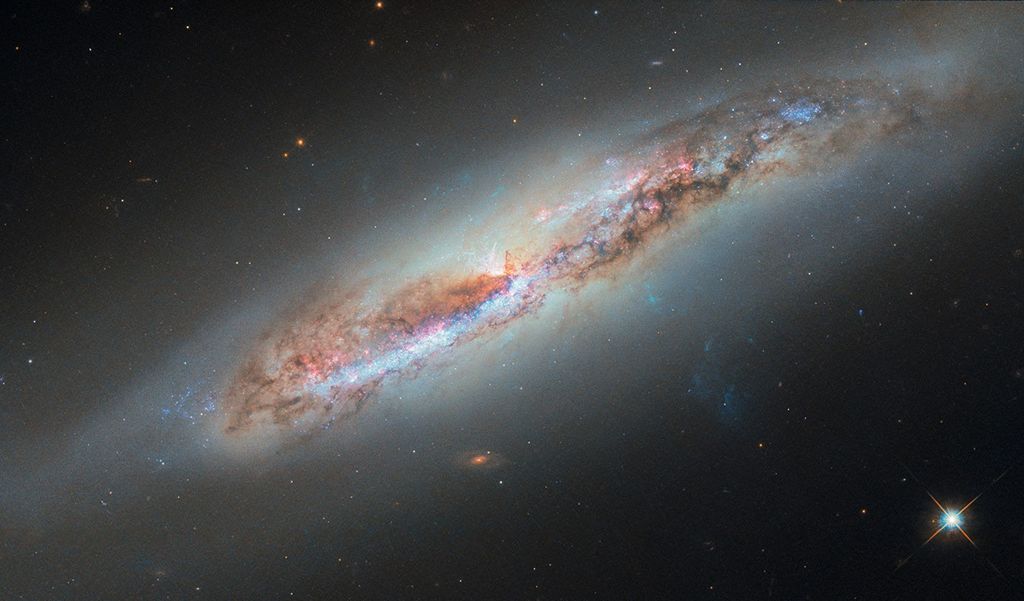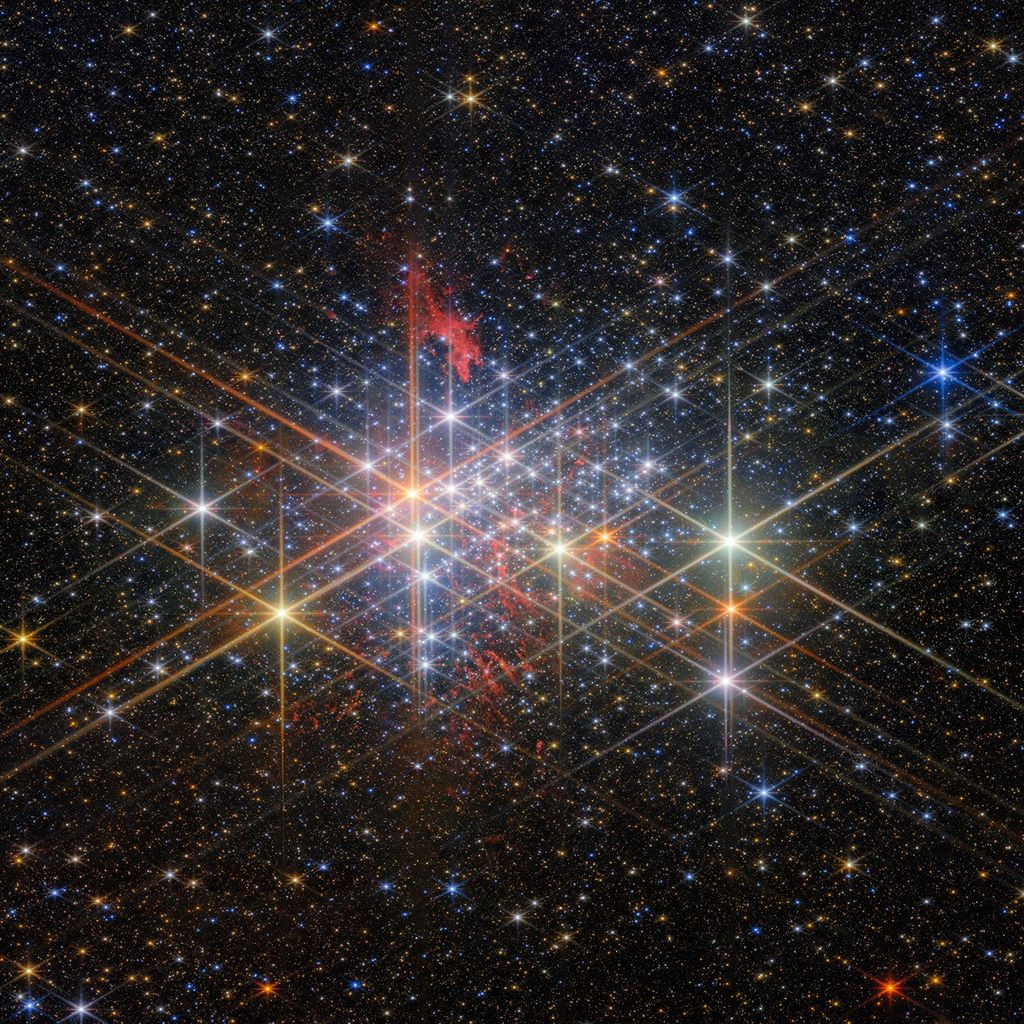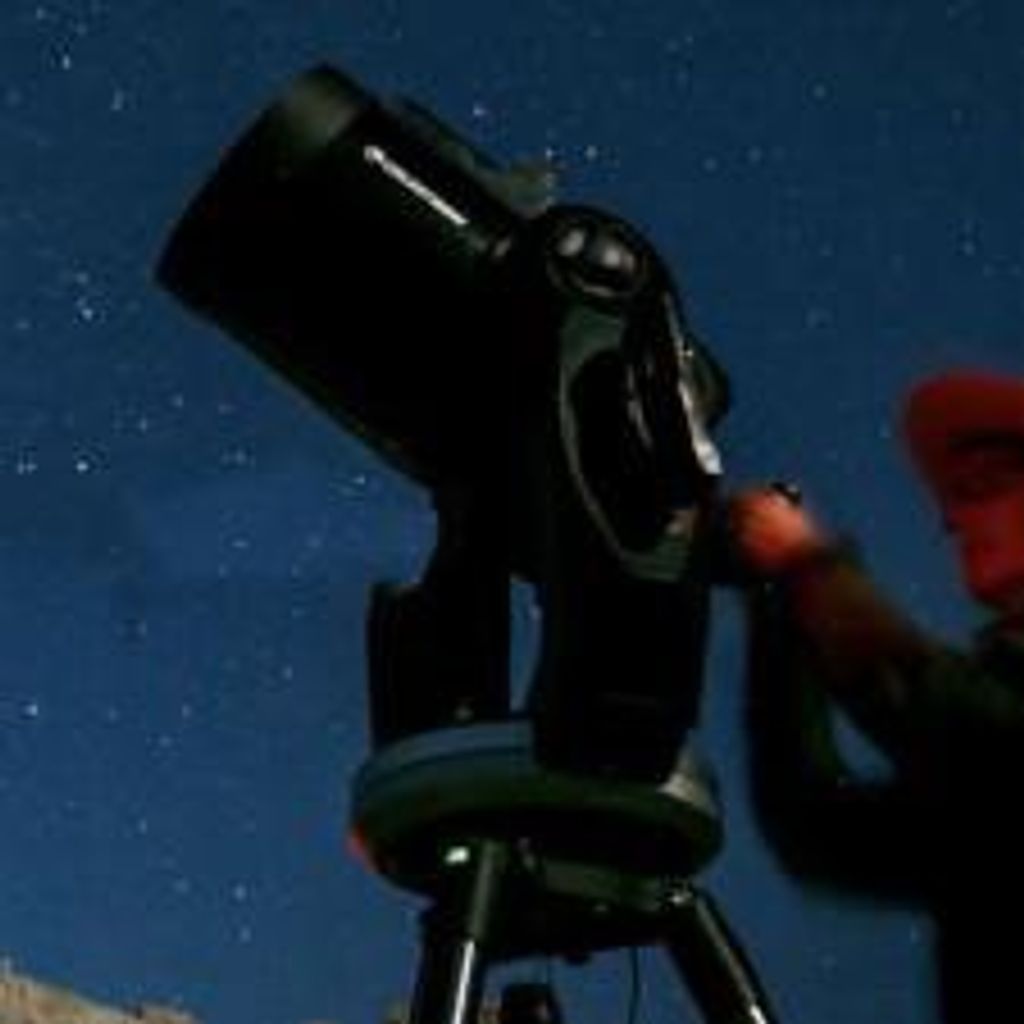1 min read
Compass and Scale Image of Jupiter Moon Transit
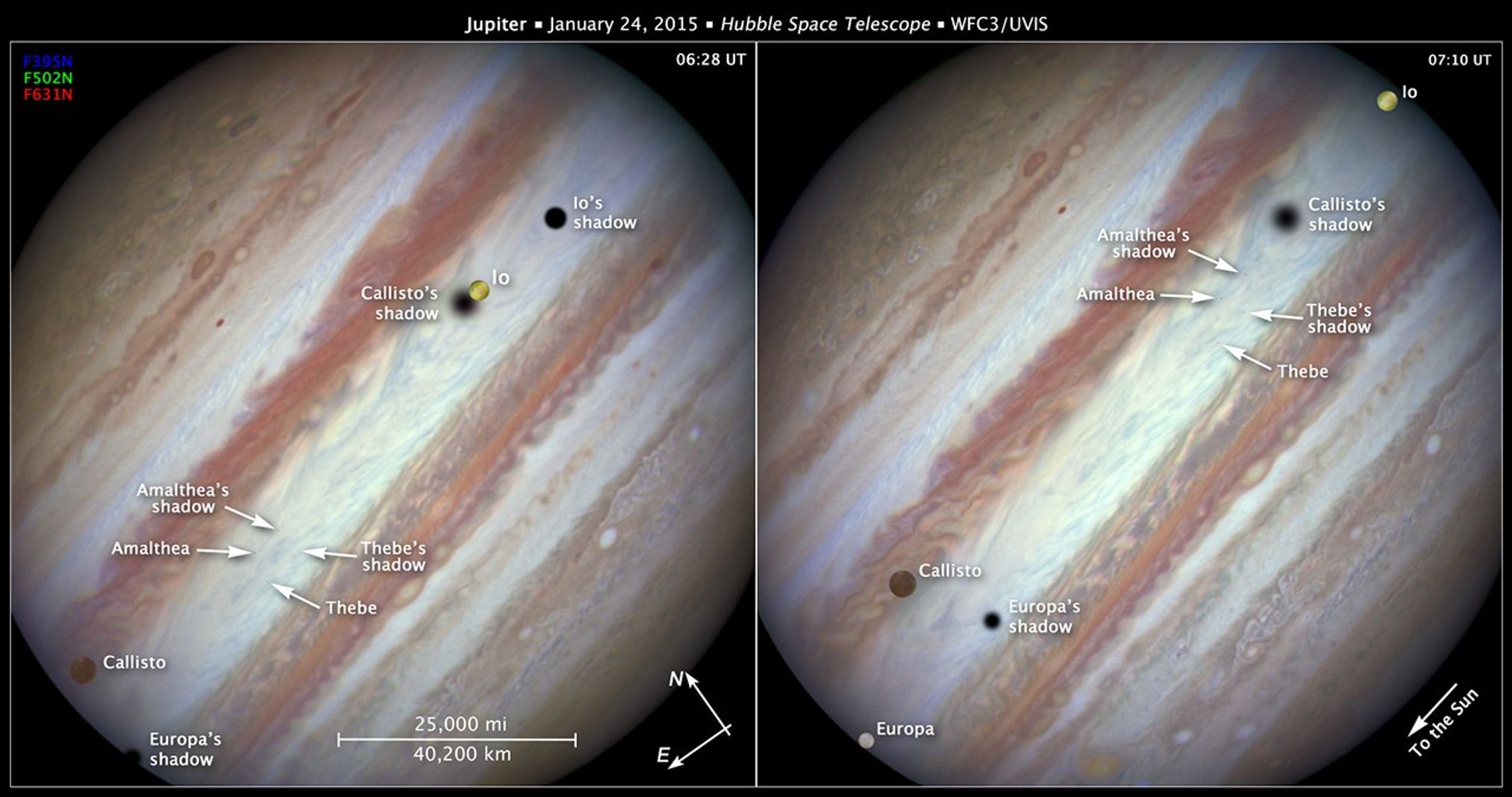
About the Object
- DimensionsDimensionsThe physical size of the object or the apparent angle it subtends on the sky.Jupiter has a diameter of roughly 88,789 miles (142,984 km) at the equator.
About the Data
- Data DescriptionData DescriptionProposal: A description of the observations, their scientific justification, and the links to the data available in the science archive.
Science Team: The astronomers who planned the observations and analyzed the data. "PI" refers to the Principal Investigator.The image was created from Hubble data from the following proposal: 14042 PI: Z. Levay (STScI), K. Noll (NASA/GSFC), M. Mutchler, J. Mack, L. Frattare, C. Christian, M. Livio, and S. Meyett (Hubble Heritage Team, STScI/AURA), A. Roman (STScI), A. Simon (NASA/GSFC), M.H. Wong (University of California, Berkeley), and R. Landis (NASA/JSC). - InstrumentInstrumentThe science instrument used to produce the data.HST>WFC3/UVIS
- Exposure DatesExposure DatesThe date(s) that the telescope made its observations and the total exposure time.January 24, 2015
- FiltersFiltersThe camera filters that were used in the science observations.395 nm, 502 nm, and 631 nm
- Object NameObject NameA name or catalog number that astronomers use to identify an astronomical object.Jupiter
- Object DescriptionObject DescriptionThe type of astronomical object.Planet
- Release DateFebruary 5, 2015
- Science ReleaseHubble Captures Rare Triple-Moon Conjunction
- Credit

These images are composites of separate exposures acquired by the WFC3 instrument on the Hubble Space Telescope. Several filters were used to sample narrow wavelength ranges. The color results from assigning different hues (colors) to each monochromatic (grayscale) image associated with an individual filter. In this case, the assigned colors are: Blue: F395N (395 nm) Green: F502N (502 nm) Red: F631N (631 nm)

Related Images & Videos
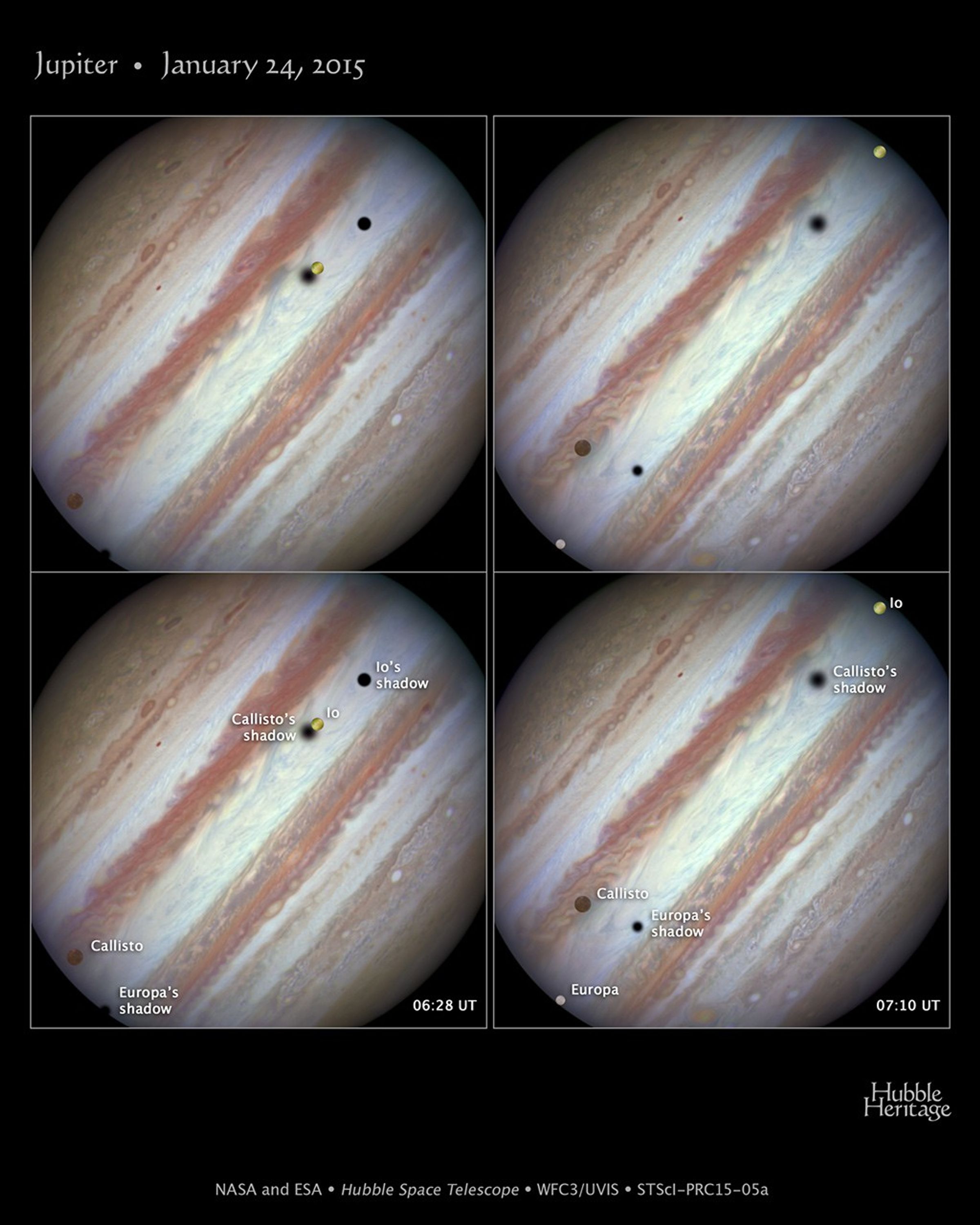
Jupiter — January 24, 2015
Firing off a string of snapshots like a sports photographer at a NASCAR race, NASA's Hubble Space Telescope captured a rare look at three of Jupiter's largest moons parading across the banded face of the gas-giant planet: Europa, Callisto, and Io. These so-called Galilean...

Jupiter Moon Transit, January 24, 2015 (06:28 UT)
Three moons and their shadows parade across Jupiter at the start of the event at 06:28 UT on January 24, 2015. From left to right the moons Callisto and Io are above Jupiter's cloud tops. The shadows from Europa (not seen in the image), Callisto, and Io are strung out from left...

Jupiter Moon Transit, January 24, 2015 (07:10 UT)
Three moons and their shadows parade across Jupiter near the end of the event at 07:10 UT on January 24, 2015. Europa has entered the frame at lower left. Slower-moving Callisto is above and to the right of Europa. Fastest-moving Io is approaching the eastern limb of the planet....

Jupiter Moon Transit, January 24, 2015 (06:28 UT) – Annotated
Three moons and their shadows parade across Jupiter at 06:28 UT on January 24, 2015. From left to right the moons Callisto and Io are above Jupiter's cloud tops. The shadows from Europa (not seen in the image), Callisto, and Io are strung out from left to right.

Jupiter Moon Transit, January 24, 2015 (07:10 UT) – Annotated
Three moons and their shadows parade across Jupiter near the end of the event at 07:10 UT on January 24, 2015. Europa has entered the frame at lower left. Slower-moving Callisto is above and to the right of Europa. Fastest-moving Io is approaching the eastern limb of the planet....
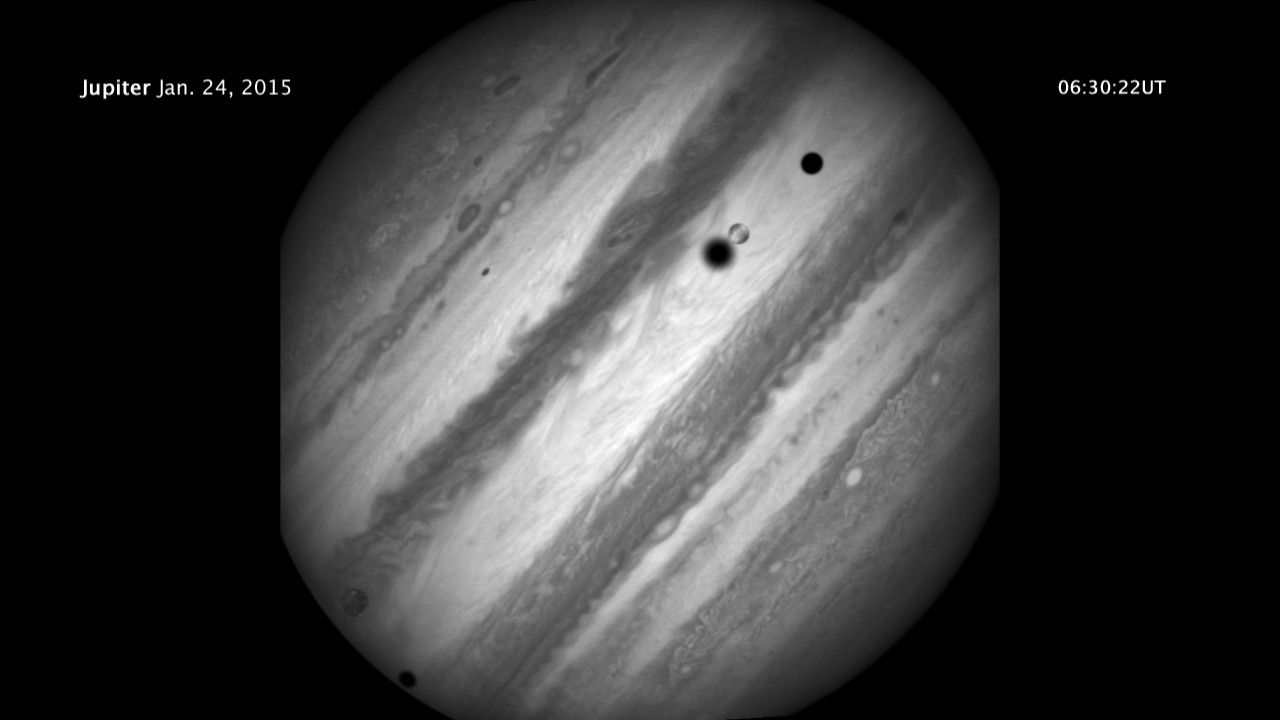
Hubble Captures Rare Triple-Moon Conjunction
This video shows a rare look at three of Jupiter's largest moons parading across the banded face of the gas-giant planet: Europa, Callisto, and Io. They were photographed by NASA's Hubble Space Telescope on January 24, 2015. These large moons can commonly be seen transiting the...
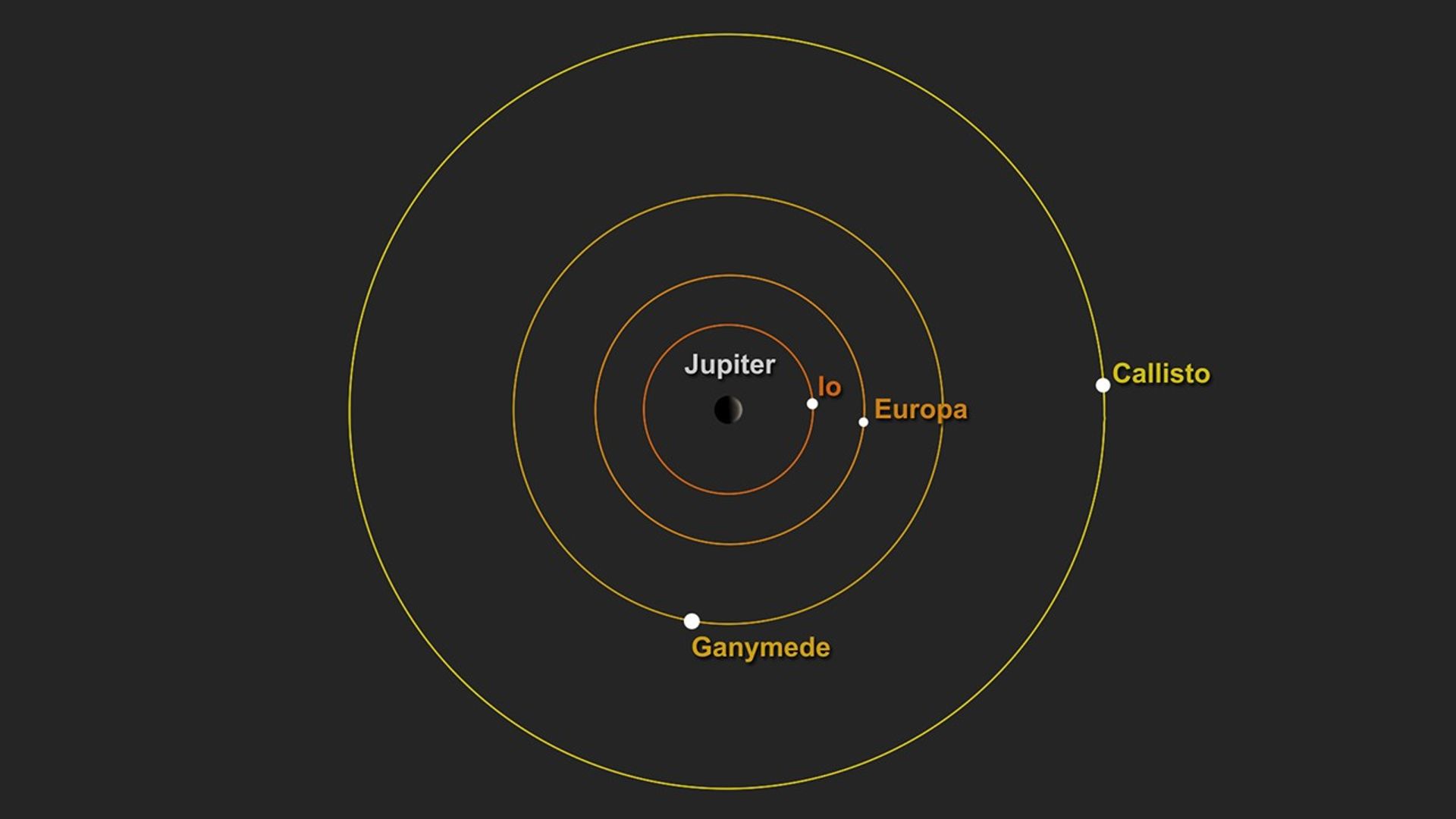
Geometry of Rare Triple-Moon Conjunction at Jupiter
This simulation illustrates the orbits and positions of Jupiter's four largest moons on January 24, 2015, during a rare triple-moon conjunction where the Hubble observations captured three of Jupiter's largest moons parading across the banded face of the gas-giant planet:...
Share
Details
Claire Andreoli
NASA’s Goddard Space Flight Center
Greenbelt, Maryland
claire.andreoli@nasa.gov

